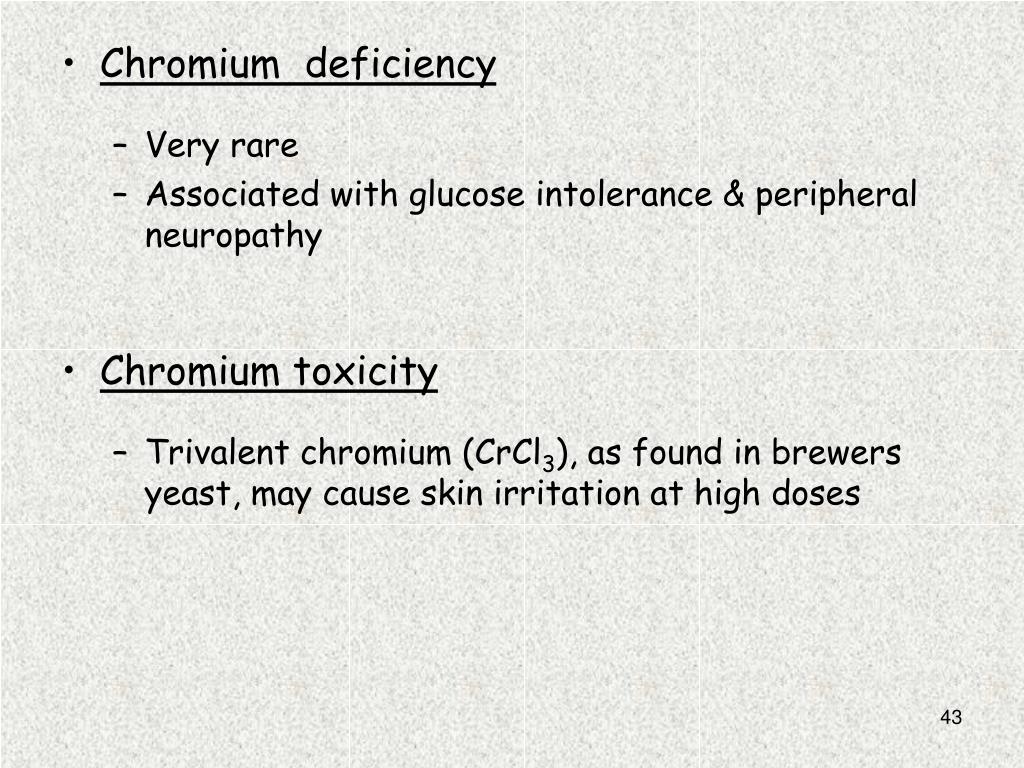

Is supplementation required? Sports Med 1997 23:341-349. Multiple studies have concluded that there is no evidence that chromium supplementation increases muscle mass to a level greater than that which is produced with a healthy diet and exercise alone. Among athletes, chromium is promoted as an alternative to anabolic steroids. Controversy exists concerning other claimed benefits of chromium supplementation. However, these trials have studied few patients the importance of chromium deficiency in the average patient with type 2 diabetes has not been established. Reversal of corticosteroid induced diabetes mellitus with supplemental chromium. Elevated intakes of supplemental chromium improve glucose and insulin variables in individuals with type 2 diabetes. Limited studies have reported that the addition of chromium picolinate supplements to the dietary regimens of patients with type 2 or steroid-induced diabetes mellitus may result in improvements in glycemic control and cholesterol in some patients, and may allow for the reduction of antidiabetic medication. Chromium supplementation should only be expected to improve disorders that are due to chromium deficiency. Impaired protein and lipid metabolism, peripheral neuropathy, and encephalopathy secondary to chromium deficiency have also been reported. Clinically, overt deficiencies may be detected as the development of impaired glucose tolerance, glycosuria, and insulin resistance. Chromium deficiency during total parenteral nutrition. Overt signs and symptoms of chromium deficiency are usually only observed in adult patients eating diets high in refined foods or who are receiving long-term total parenteral nutrition without chromium supplementation. Dietary sources of chromium (Cr3+) include whole grains, egg yolks, brewer’s yeast, liver, meats, nuts, potatoes with skin, and beer. Are there any other special considerations?ĭiabetics taking chromium should do so only under physician’s supervision, as should anyone using prescribed medications for blood sugar control.Chromium, in its trivalent state (i.e., Cr3+), is an essential trace element that is required for proper carbohydrate, lipid, and nucleic acid metabolism in the human body. Researchers have not found any toxic effects that result from taking high doses of chromium. Are there any risks associated with too much chromium? Romaine lettuce, raw onions and ripe tomatoes are all good sources. Some fruits, vegetables, and spices provide chromium. How do you get enough chromium from foods?īrewer’s yeast, broccoli, grape juice, meat and whole-grain products are all excellent sources. Weil recommends 200 mcg a day as part of a multi-vitamin multi-mineral, and recommends 1000 mcg of GTF chromium a day for those with type 2 diabetes or metabolic syndrome. lactating females over 18, 45 mcg per dayĭr.pregnant females over 19, 30 mcg per day.The National Institutes of Health (NIH) recommends: How much, and what kind of chromium, does an adult need? Altered cholesterol metabolism, accelerated atherosclerosis, decreased growth in young people and delayed healing time after injuries or surgery can result from chromium deficiency. Even mild deficiencies of chromium can produce problems in blood sugar metabolism, and contribute to other symptoms such as anxiety or fatigue. Life threatening clinical deficiency may be rare, but deficiency is common.īecause adequate dietary chromium helps to maintain insulin sensitivity, chromium deficiency can contribute to the development of diabetes and metabolic syndrome. Dietary chromium has a low absorption rate, which becomes even lower with age, so the elderly are especially at risk. The industrialization of the American food supply chain, reflected in very low soil levels of chromium and the loss of chromium from refined foods, especially sugar and flours, probably contributes to this.

population is mildly deficient in chromium, a greater incidence of deficiency than is found in almost any other developed country. What are the signs of a chromium deficiency?Īn estimated 25-50% of the U.S. Chromium can also help raise HDL (“good”) cholesterol levels, and may play a role in preventing heart disease. Inadequate intake of chromium has been linked to the development of glucose intolerance, a condition seen in type 2 diabetes. Chromium enhances the actions of insulin and is necessary for maintaining normal metabolism and storage of fats, proteins and carbohydrates.


 0 kommentar(er)
0 kommentar(er)
